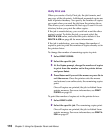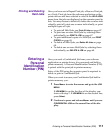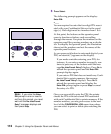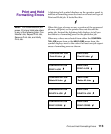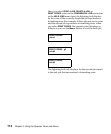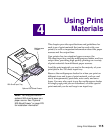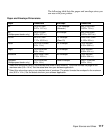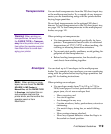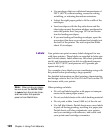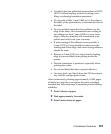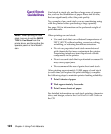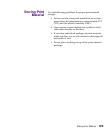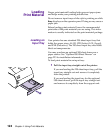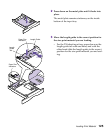
118
Chapter 4: Using Print Materials
Print Material
Guidelines
Selecting the appropriate print material (paper, transpar-
encies, envelopes, labels, and card stock) for your printer
helps you avoid printing problems.
Note: For detailed information
about print material characteris-
tics, refer to the
Card Stock &
Label Guide
on the CD that
comes with your printer.
The following sections contain guidelines for choosing the
correct print material for your printer.
Paper
For the best print quality, use 75 g/m
2
(20 lb) xerographic,
grain long paper. Try a sample of any paper you are con-
sidering using with the printer before buying large quanti-
ties.
When loading paper, note the recommended print side on
the paper package, and load paper accordingly. See
“Loading Print Material” on page 124 for detailed loading
instructions.
The following papers are not recommended for use with
your printer:
• Paperwitharoughorheavilytexturedsurface
• Coated papers, such as erasable bond
• Preprinted papers manufactured with chemicals
that may contaminate the printer
• Multiple-part forms
• Synthetic papers
• Thermal papers
• Recycled paper having a weight less than 75 g/m
2
(20 lb)
Letterhead
Preprinted papers such as letterhead must be able to with-
stand temperatures up to 200°C (392°F) without melting
or releasing hazardous emissions. Use inks that are not
affected by the resin in toner or the silicone in the fuser.
Inks that are oxidation-set or oil-based should meet these
requirements; latex inks might not.



